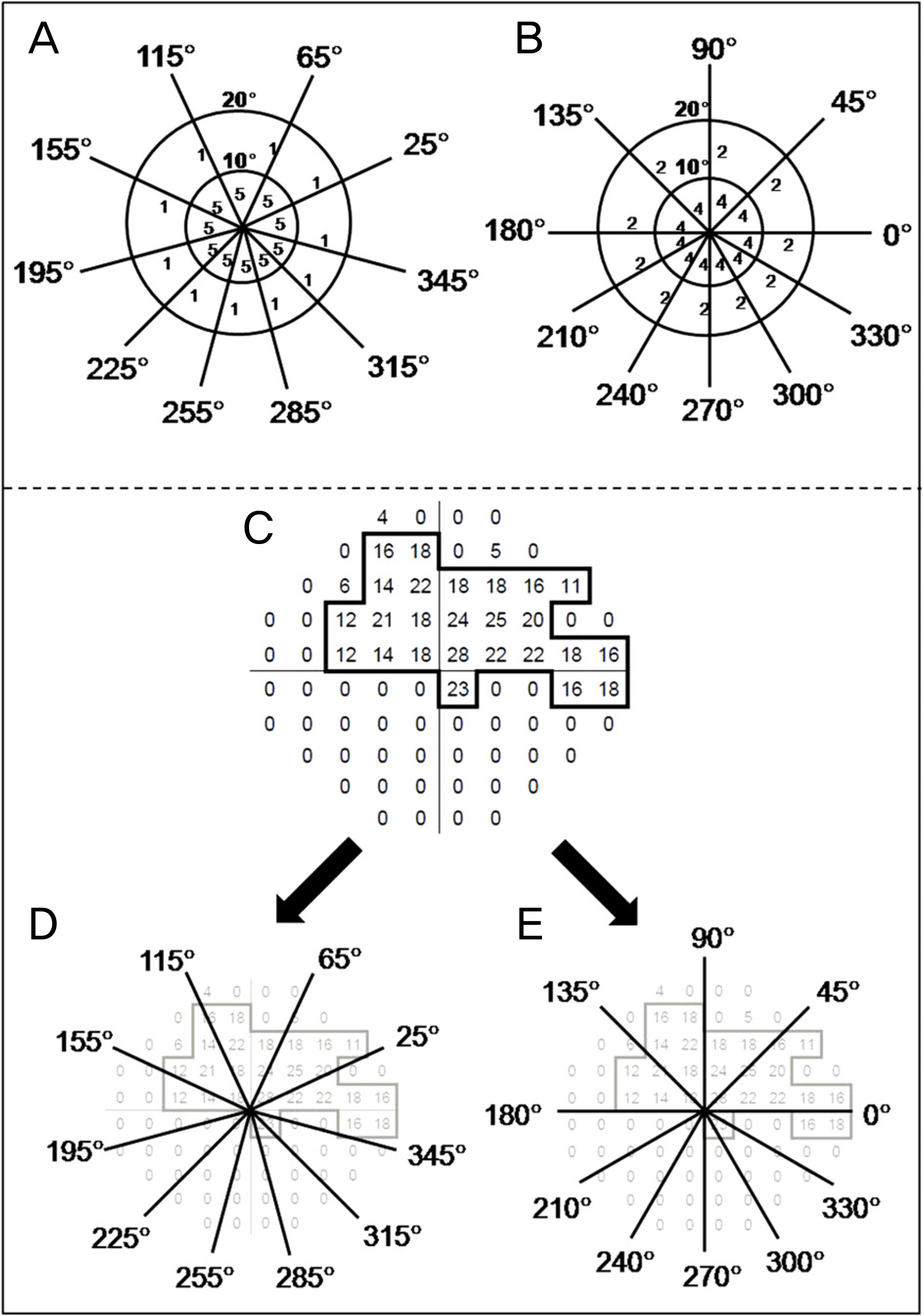J Korean Ophthalmol Soc.
2013 Dec;54(12):1907-1917.
Comparative Analysis of the Humphrey Static Perimetry and the Goldmann Kinetic Perimetry: Application of the Humphrey Static Perimetry to Visual Disability Evaluation
- Affiliations
-
- 1Department of Ophthalmology, Soonchunhyang University College of Medicine, Seoul, Korea. scheye@schmc.ac.kr
Abstract
- PURPOSE
In the evaluation of visual field defect, Goldmann kinetic perimetry is the preferred method. However, in many cases, Humphrey static perimetry is performed for visual disability evaluation in Korea. In the present study we investigated the correlation between Goldmann kinetic perimetry and Humphrey static perimetry for disability evaluation using visual field score (VFS).
METHODS
This study included 126 eyes, classified into the following groups: 60 eyes, normal group; 11 eyes, contraction of central visual field group; 42 eyes, irregular visual field group; 13 eyes, hemianopsia group. All subjects were examined with Goldmann kinetic perimetry and Humphrey static perimetry. We studied the correlation of the VFS between Goldmann kinetic perimetry and Humphrey static perimetry according to the Korean Academy of Medical Science Guides for Impairment Evaluation (KAMS Guides) and American Medical Association Guides for the Evaluation of Permanent Impairment (AMA Guides).
RESULTS
Regarding contraction of central visual field group, Goldmann VFS, Humphrey VFS and extended Humphery VFS showed no statistical significance (AMA: p = 0.50, p = 0.30, KMAS: p = 0.36, p = 0.18. respectively). In the irregular visual field and hemianopsia groups, Goldmann VFS and Humphrey VFS showed statistical significance (AMA: p = 0.00, p = 0.00, KMAS: p = 0.00, p = 0.00. respectively). Goldmann VFS and extended Humphrey VFS showed no statistical significance (AMA: p = 0.13, p = 0.12, KMAS: p = 0.08, p = 0.99. respectively).
CONCLUSIONS
The contraction of central visual field based on Humphrey static perimetry can be applied to visual disability evaluation. However, in the majority of cases, there is a difference between the two tests and Goldmann kinetic perimetry should be used first in the evaluation of visual field disability evaluation.
MeSH Terms
Figure
Reference
-
References
1. Schiller J, Paetzold J, Vonthein R. . Quantification of stato-ki-netic dissociation by semi-automated perimetry. Vision Res. 2006; 46(1-2):117–28.
Article2. Trobe JD, Acosta PC, Shuster JJ, Krischer JP. An evaluation of the accuracy of community-based perimetry. Am J Ophthalmol. 1980; 90:654–60.
Article3. Mills RP, Hopp RH, Drance SM. Comparison of quantitative test-ing with the Octopus, Humphrey, and Tübingen perimeters. Am J Ophthalmol. 1986; 102:496–504.
Article4. Beck RW, Bergstrom TJ, Lichter PR. A clinical comparison of vis-ual field testing with a new automated perimeter, the Humphrey Field Analyzer, and the Goldmann perimeter. Ophthalmology. 1985; 92:77–82.
Article5. Trope GE, Britton R. A comparison of Goldmann and Humphrey automated perimetry in patients with glaucoma. Br J Ophthalmol. 1987; 71:489–93.
Article6. Katz J, Tielsch JM, Quigley HA, Sommer A. Automated perimetry detects visual field loss before manual Goldmann perimetry. Ophthalmology. 1995; 102:21–6.
Article7. Heijl A, Drance SM. A clinical comparison of three computerized automatic perimeters in the detection of glaucoma defects. Arch Ophthalmol. 1981; 99:832–6.
Article8. American Medical Association. Guides to the evaluation of Permanent impairment. 5th ed.Chicago: AMA Press;2001. p. 267–94.9. Korean Academy of Medical Science. Guides for impairment evaluation. Korea: Pakyoungsa. 2011; 81–95.10. Chung SE, Lee SJ, Choi KS, Park SH. Comparison of the normal visual fields between the goldmann and humphrey kinetic perimetries. J Korean Ophthalmol Soc. 2009; 50:904–10.
Article
- Full Text Links
- Actions
-
Cited
- CITED
-
- Close
- Share
- Similar articles
-
- Comparison of the Normal Visual Fields Between the Goldmann and Humphrey Kinetic Perimetries
- Usefulness of the Binocular Double Vision Field Using Kinetic Automated Perimetry in Diplopia
- The Comparison of The Matrix Perimetry and Humphrey Standard Perimetry in Various Patients Group
- Clinical Evaluation of Oculokinetic Perimetry
- Visual Field in Normal Korean Subjects: Traquair's "Hill of Vision"





